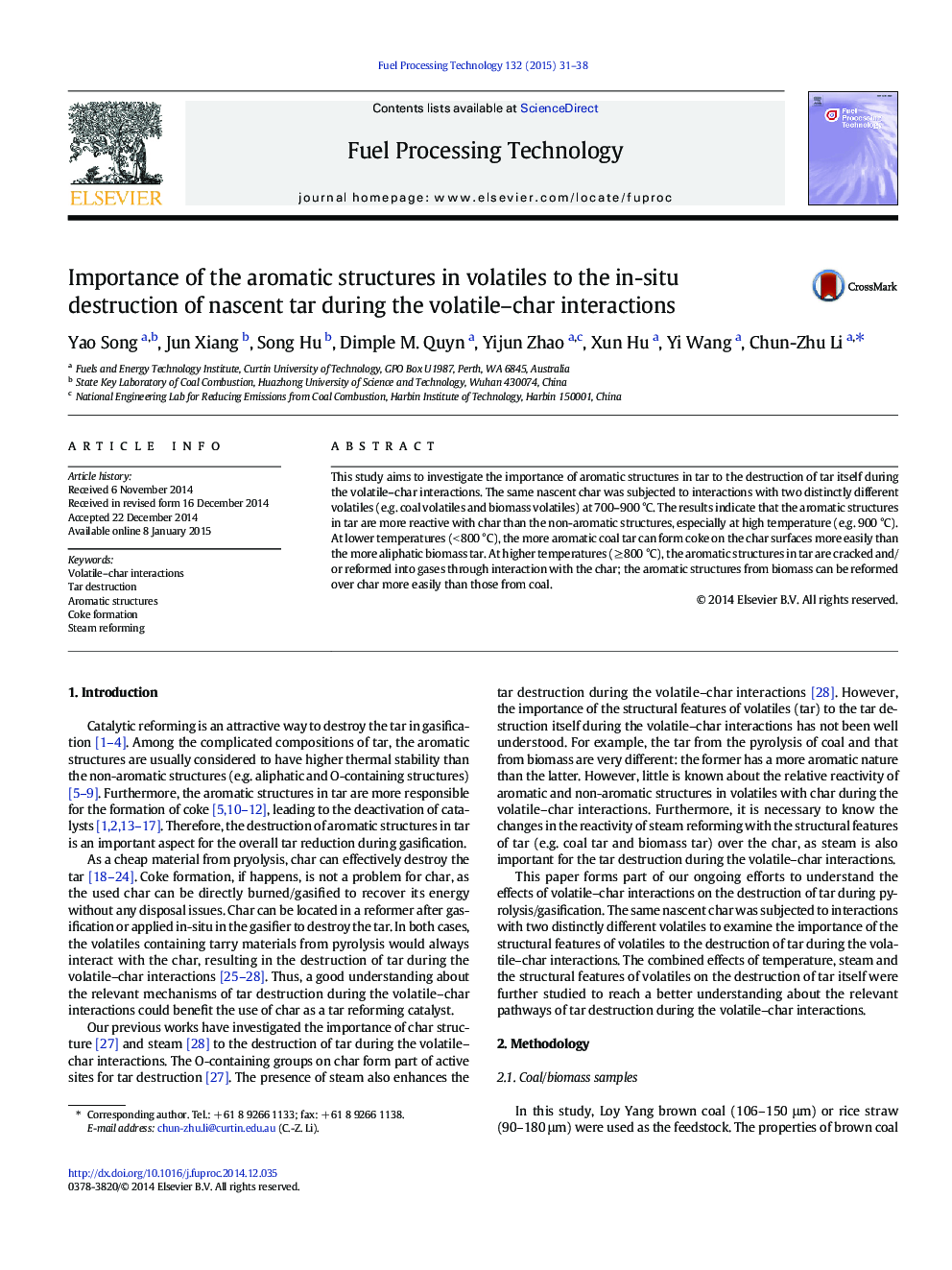| Article ID | Journal | Published Year | Pages | File Type |
|---|---|---|---|---|
| 209589 | Fuel Processing Technology | 2015 | 8 Pages |
•Aromatics are more reactive with char than non-aromatics at high temperature.•Coal tar forms coke on char more easily than biomass tar at lower temperature.•Tar is cracked and/or reformed on char at higher temperature.•Biomass tar is reformed over char more easily than coal tar.
This study aims to investigate the importance of aromatic structures in tar to the destruction of tar itself during the volatile–char interactions. The same nascent char was subjected to interactions with two distinctly different volatiles (e.g. coal volatiles and biomass volatiles) at 700–900 °C. The results indicate that the aromatic structures in tar are more reactive with char than the non-aromatic structures, especially at high temperature (e.g. 900 °C). At lower temperatures (< 800 °C), the more aromatic coal tar can form coke on the char surfaces more easily than the more aliphatic biomass tar. At higher temperatures (≥ 800 °C), the aromatic structures in tar are cracked and/or reformed into gases through interaction with the char; the aromatic structures from biomass can be reformed over char more easily than those from coal.
